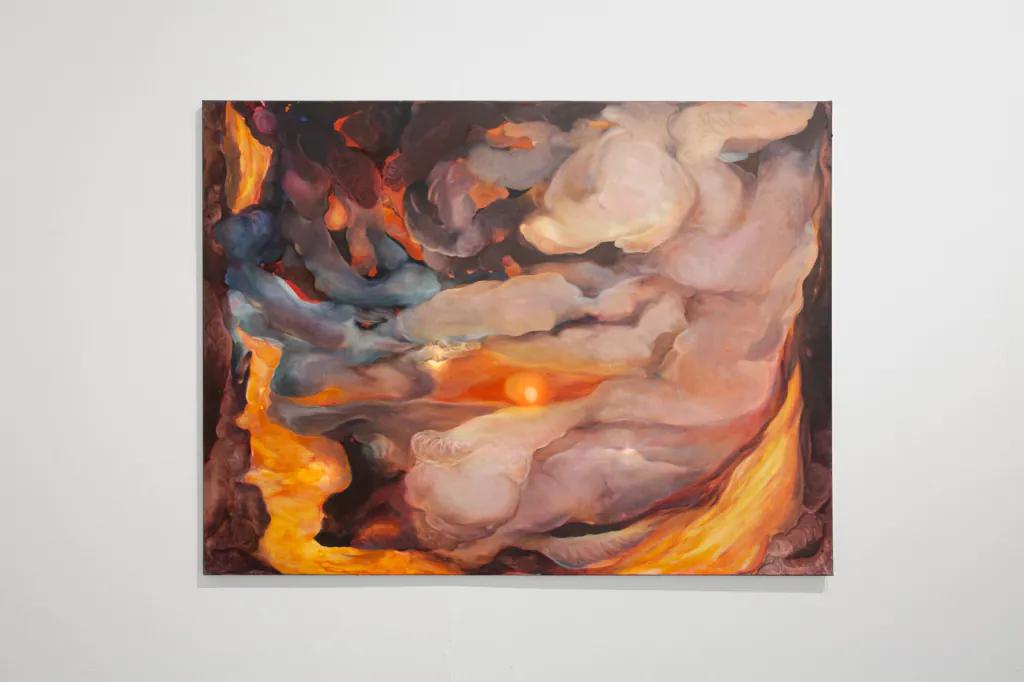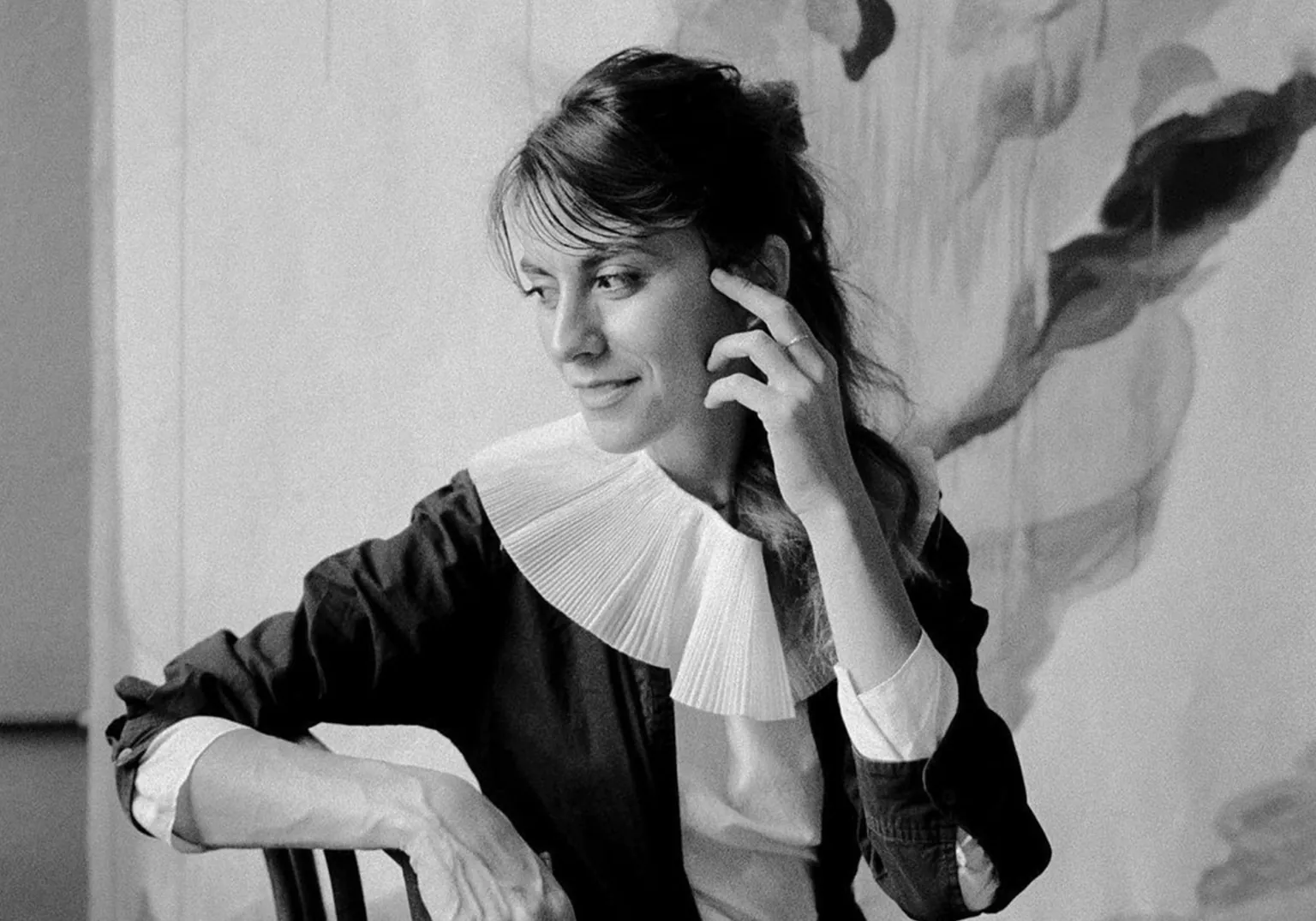Karina, in one of your early manifestos you talk about loving our planet and the natural world. Intuitively, it seems to me that your interest in this topic may have something to do with your experience of living and studying in Sweden, because personally in my imagination Sweden is firmly associated with Linnaean biology and environmental movements in the twentieth century. Please tell us when and why you decided to dedicate your art to depicting the cosmos and the organic world.
I grew up in St. Petersburg, and at the age of 19 I went to study in Sweden at an art school on the shores of the North Sea, located right on the cliffs by the water. She lived in a reserve in the woods, in a house near which deer and hares roamed. It was an ideal environment for creativity, the studios were on the sea, among forests and fields, there wasn’t even a grocery store, just modern art in school with a very tight schedule: a new technique every new week. That’s when I decided that I would dedicate my art to nature and stopped drawing people. I was very attracted to space then, I wanted to get into the open space very much, it seemed that I came from somewhere else, got here and fell in love with the nature of this planet.

In the history of art it is very common for artists who scrutinize nature to also be interested in esotericism, such as Hilma Af Klint, whose exhibition was shown at the Tate a year ago. How important is the esoteric aspect to you? What additional meanings can be seen in images of crystals or plants?
Last year’s exhibition at the Tate was a truly stunning inspiration, impressed with its size, mix of hues and as if modern shapes. My stories at the moment explore the contrasts of light and darkness, anxiety and calm, pain and hope, death and life. My work depicts organic elements, landscapes and the elements, all about the movement of life substance or prana. As time goes on, my practice becomes more personal and deeper. In the past my graphics have been purely figurative, now I am interested in the semi-abstract representation of all living things and the moment when energy appears and disappears in space.
There are many references to surrealism in your early art: there are fantastic images of animals, and a play with scale when a crystal turns into a seascape. What exactly is the Surrealist experience interesting to you, can this language tell us something about our time and about us?
Surrealism is interesting because it pushes the boundaries of the familiar, inspires what is ambiguous, slightly or completely strange and overly magical.
I was once in Amsterdam at a VR movie theater showing an immersive experience in the world of Salvador Dali. It was really a very exciting adventure inside the artist’s paintings, certainly the world of technology opens the door to absolutely crazy realities where anything is possible, any surrealism. Perhaps one day I too will create a reality in VR from my paintings, but for now I want to try to portray something that allows you to immerse yourself inside the painting without the use of modern technology.

You work in a variety of techniques and media, but in recent years you seem to have been particularly involved in abstract painting. Let’s talk about the series of paintings that were nominated for the Artist of the Month contest. Please tell us about what opportunities and advantages you see in abstract painting and why you turned to it now?
My painting is at the intersection, somewhere abstract, in places not so much: a landscape or a body, a stone or a tree is drawn. In my recent works, I try to reflect the value of the human body and life itself, without resorting to the depiction of human figures, it is as if I am trying to portray our inner world, a secret landscape full of organs and light. Through a combination of neon, dark and pastel colors, I wanted to express a sense of hope.

Oil work fascinates me because of its super plasticity and its ability to convey depth and transparency. Since I’ve worked in watercolor all my life, my oil painting, with its transparency resembles watercolor, but in oil there are amazingly many possibilities, it’s breathtaking.
When I first saw your abstract works, I thought of the art of American artist Georgia O’Keeffe. Perhaps this association occurred to me by chance, but if not, please tell me how you build a dialog with her and do you dialog with other twentieth-century artists?
About O’Keeffe, I’ve been told many times about the similarities, thank you. This comparison does hold true, in her lines and shapes I often see something very familiar, like from a past life. My painting practice doesn’t seem to have strayed much from twentieth-century artists or even Hilma Af Klint of the nineteenth century.

I believe that with the advent of artificial intelligence, something as timeless and traditional as oil painting will become more appreciated, it will happen a little later. So even though it’s very old fashioned to paint oil on canvas, I think I’m on the right track. It pains me to see how painting as an art form has fallen into an endangered species. Although I have heard of comforting studies that have shown that viewers are more enthusiastic about paintings than they are about installations and video art. Painting is a very clear product to contemplate and market, so it’s not going anywhere, and I think it should be cultivated, encouraged and protected rather than suppressed.
You’ve lived and studied in many cities and countries – Sweden, Austria, Japan – and among these movements you spent a year in London at St. Martins University. Now you’re coming back here again. Is there anything special about this city that made you choose it? Please share your plans and hopes for your future in the UK.
I live in Devon, I’m often in London, traveling there for business and friends, it’s only three hours away by train. London really is full of opportunities and culture, which is what I came back for. It’s probably worth noting that I’ve been wandering for about 15 years now, and at some point I decided to try to find a base where I could create and grow. Ten years ago, that training at St. Martins was a very productive experience, and I decided that this environment would benefit my creativity.
The nature of Devon and Cornwall really is something stunning and breathtaking, I live right by the sea, overlooking the water, and came here after living on a Thai island for a few years. Living in unity with nature is something I find it hard to give up, although I really miss the Russian-speaking community, so visits to London are planned to be regular.
